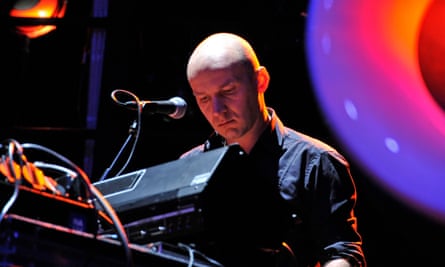In his sparky history of krautrock, Future Days, David Stubbs describes Kraftwerk’s 1975 album Radio-Activity as “a milestone in electronic music, one that marks a precise and signal midpoint between Stockhausen and Depeche Mode”.
Radioland, an Anglo-French trio named after the third track on the album, imagine an alternative history. Instead of using Radio-Activity as the launchpad for synthpop, this trio take the album’s melodies and textures as the starting point for avant-garde explorations. It’s done entirely live, with English pianist Matthew Bourne behind a bank of vintage Moogs, Minimoogs and Korgs, French composer Franck Vigroux supplying beats and basslines, and French installation artist Antoine Schmitt creating live programmed art.
Jazz pianists often don’t “get” synthesisers. Pop mavericks tend to use synths to transform themselves into cyborgs – to commune with the electronic “other”; a jazz musician will often try to play one as if it’s a piano or organ. Bourne, a staggeringly talented pianist, also has an ability to explore the synthesiser’s most Kraftwerkian properties.

Kraftwerk’s melodies are strong enough to cope with Bourne’s mutilation. Sometimes he mutilates them melodically – on Transistor he exploits the melody’s melismatic qualities, using the pitchwheel to create crazed Arabic scales; on Radio Stars he starts to really shred. On the more familiar themes, such as Radioactivity or Airwaves, the mutilation is more timbral: the sounds are intensified and manipulated with modulators, oscillators and effects units. Sometimes Bourne even growls into a vocoder in a mix of English and German.
This could easily have been a dry, academic exercise. Instead, it was a very clubby experience. Schmitt’s constantly mutating op-art images – possibly reflecting the life cycle of the particles used in atomic power – were mesmerising, while the high-volume music had an appeal that was cerebral and visceral. Atomkraft? Ja bitte.

Comments (…)
Sign in or create your Guardian account to join the discussion